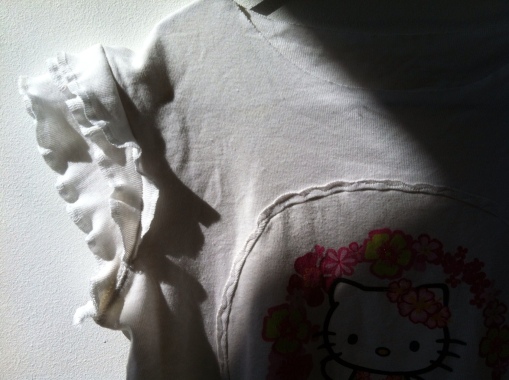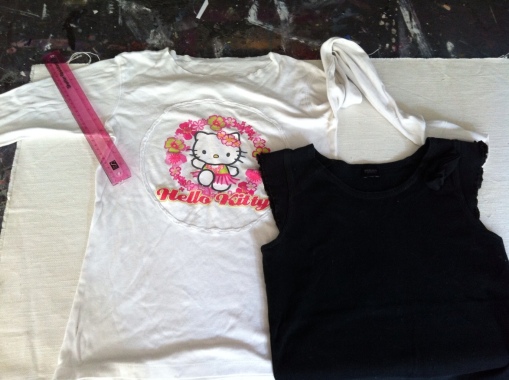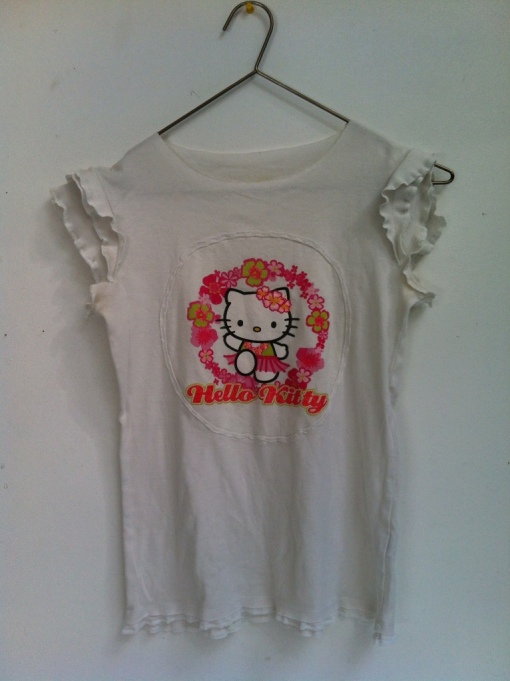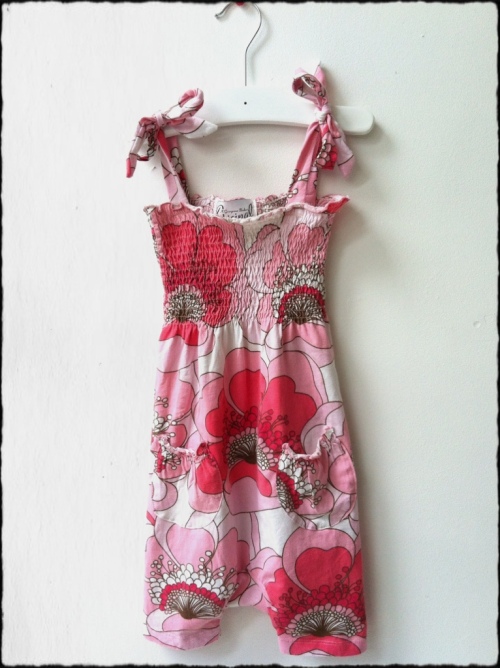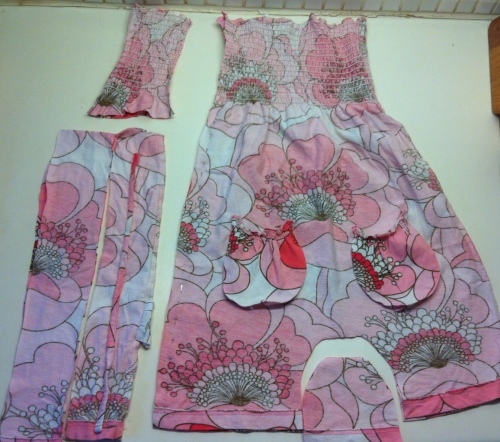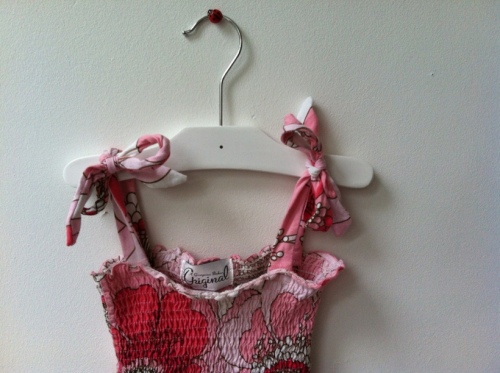
Well, that was a project. From scratch, using a vintage towelling fabric from Chiswick Boot Fair (thanks Bridget from What the Butler Wore, for spotting it AND giving excellent directions across an ENORMOUS field full of car booters, to find it instantly), and some cotton spotty lining from John Lewis.

Pattern is Robot Dog bathrobe (style 33) from Ottobre magazine , which if you haven’t come across it yet, is a Finnish pattern magazine for children. Hubby bought me an annual subscription for Christmas and each issue has something like 30 patterns – amazing value and some really cute, inspirational styling.

Image from Craftymama.blogspot.co.uk. Thanks!
Tracing the patterns is a bit of a trip – 150-odd pattern pieces packed onto three double-sided pages, each pattern in approximately six different sizes and in different colours. See? But you just kind of focus in, and all the other lines just melt away and your get your tracing wheel and ruler out and follow your single little line. Probably best done when children are in bed, hubby’s Doing Something That Doesn’t Involve Talking To You Or Being Anywhere Nearby, and pets are outside. Useful pattern-tracing tutorial from Crafty Mamas here, if you’re inspired to try it yourself.

Construction method of the Robot Dog bathrobe (style 33) is straightforward, and it comes together so quickly and simply. I’m reminded why I love sewing, coming on the back of the fiddly, finger-pricking, and funk-inducing lunchbag project. Put it this way, I skipped meals to move on to each next step.

And got very precise, neat and detail-focused. Check out those clipped curves!

So I finished it, delighted with the colours, and really proud to have done such a neat job. 21-month-old daughter, however, NON-BLOODY-PLUSSED. The following photo records one of the nine or so seconds she’s kept this bathrobe on.

Will not wear it in the morning, evening, after bath, watching TV or reading a book. Not too downhearted, though. There will be a birthday, large toy or dressing up occasion that it will be PERFECT for.
